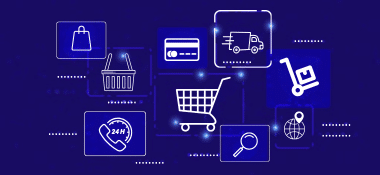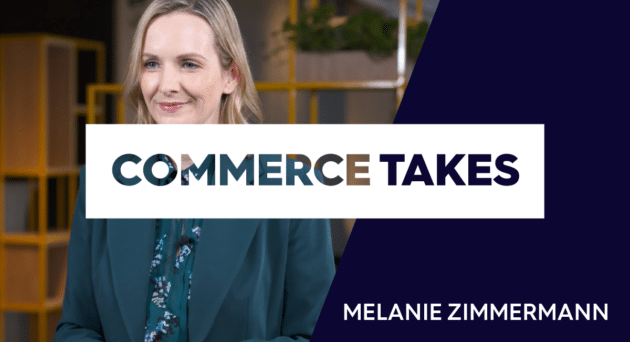Closed-loop measurement is the key to understanding and optimizing how your sponsored product ads (SPAs) perform, and it’s one of the greatest benefits of retail media. Outside the realm of retail media, advertisers wrestle with fragmented data. They can see ad impressions and clicks, but the link to actual purchases is hazy. Without closing that feedback loop, it’s tricky to decide where to put your money or how to measure success. The clarity that closed-loop measurement provides is one the main reasons why increasing numbers of advertisers are shifting budgets to retail media.
What is closed-loop measurement?
Closed-loop measurement in retail media refers to the process of tracking and analyzing the entire customer journey—from ad exposure to purchase—within a single ecosystem. It allows advertisers to directly connect their media spend to sales outcomes, whether online or in-store, by leveraging first-party retailer data.
Traditional measurement methods often stop after the click. Advertisers then correlate ad clicks with product sales. But correlation isn’t necessarily causation, and advertisers are relying on assumptions rather than facts. By contrast, the closed-loop measurement approach eliminates guesswork by providing clear attribution, showing which ads led to actual transactions. Because retailers have access to both shopper behavior and sales data, they can offer advertisers a transparent view of campaign performance, enabling smarter optimizations and better return on ad spend (ROAS).
To put it another way, closed-loop measurement ties ad views and clicks directly to purchases so you know what’s working and what’s not. Instead of being limited to surface metrics like impressions or CTR, you get a deeper look at your return on ad spend (ROAS) and can optimize for real sales. Because at the end of the day, it’s not just about running ads – it’s about optimizing every dollar spent to drive measurable business results.
The importance of closed-loop measurement for sponsored product ads
So why does this matter for SPAs? When you connect ad exposure to actual sales, you move from guesswork to certainty. Instead of hoping your product placements spark conversions, you know which ones truly resonate with shoppers. It enables data-driven decisions and a focus on tactics that genuinely drive purchases.
Maybe you’re promoting a hot product to a new audience. Or maybe you’re reminding loyal customers there’s a fresh version of their favorite purchase. Connecting ad impressions to sales can help you figure out what’s really working and inform not just your ad campaigns, but your larger product strategy.
It also helps boost your overall performance by cutting out the waste. If something isn’t leading to sales, you’ll see it. And if something is generating a ton of revenue, you can double down on that approach. It’s all about clearer reporting and a tighter grip on your budget, so you can realize that higher return on ad spend.
Implementation and challenges
One common concern among small and medium brands is the cost and complexity of adopting new measurement technologies. However, closed-loop attribution doesn’t disrupt existing strategies – it enhances them. When you connect your ads to real results, you can make smarter decisions, reduce wasted spend, and improve performance across your campaigns.
Implementation:
- Success hinges on proper integration and data alignment. You’ll want to pair online and offline data so that you can see the full shopper journey. That could include e-commerce sales, in-store purchases, and loyalty program data.
- Get your tech stack talking. Make sure your ad platform, website analytics, and point-of-sale systems all talk to each other. Some brands use specialized marketing platforms or tools that sync up the data flows so that it’s simpler to match transactions back to ad exposures.
Challenges:
- Data privacy rules can be a big factor here. You’ll want to ensure you’re compliant while still getting the insights you need. That means making sure that all partners you work with adhere to the highest levels of privacy standards.
- It can also be tricky to unify data from different channels if you’re working with outdated systems or multiple vendors. Careful planning and the right partnerships help keep everything running smoothly.
Closed-loop measurement IRL
Real-world examples always help bring things to life, so let’s take a look at Oikos, a leading Greek yogurt brand from Danone, and how they achieved sales growth on Albertsons with Flywheel and Criteo.
Challenge
Oikos teamed up with Flywheel to drive growth on Albertsons after switching to the Criteo platform. They wanted a more detailed look at their campaigns, going beyond ROAS to see which strategies truly delivered. Early access to a new KPI Lift reporting dashboard, combined with a media plan and Flywheel’s proprietary tech, provided the depth of insight needed to boost their key performance indicators.
Solution
Flywheel began by identifying which items were performing well and which ones needed more support, then used the new KPI Lift reporting tool from Criteo to see key retail metrics like PDP visits, sales rank, and total sales in one place. They also pinpointed underperforming items relative to their media investment, leading to a broader media strategy that supported a wider range of products on Albertsons.
Armed with these insights, Flywheel created a media strategy tailored to Oikos:
- Negated branded keywords in order to avoid wasted spend on shoppers who were already searching for the brand on Albertsons.
- Harvested basket building and category keywords to increase the likelihood of driving incremental sales for shoppers who were in aisle for yogurt and similar products.
- Optimized campaigns at the placement level on site, targeting strategic placements across the homepage to drive greater exposure of the brand on Albertsons interface.
By combining Criteo’s new KPI Lift dashboard with Flywheel’s Commerce Cloud platform, the team could quickly implement changes and measure results in real time.
Results
Oikos saw a 21% boost in PDP visits, an 18% rise in sales per day, and a 13% jump in sales rank across their portfolio from January through July. By focusing on the right metrics and optimizing at every stage, they stirred up impressive sales growth.
Bringing it full circle
Closed-loop measurement aligns your marketing investments with real outcomes. Whether you’re a small brand concerned about costs or a larger advertiser ready for the next level, it helps you understand which tactics truly impact sales. If you want to take your sponsored product ads further, talk to us about how Criteo’s retail media solutions can tie everything together. It’s time to build your campaigns around the numbers that matter.















